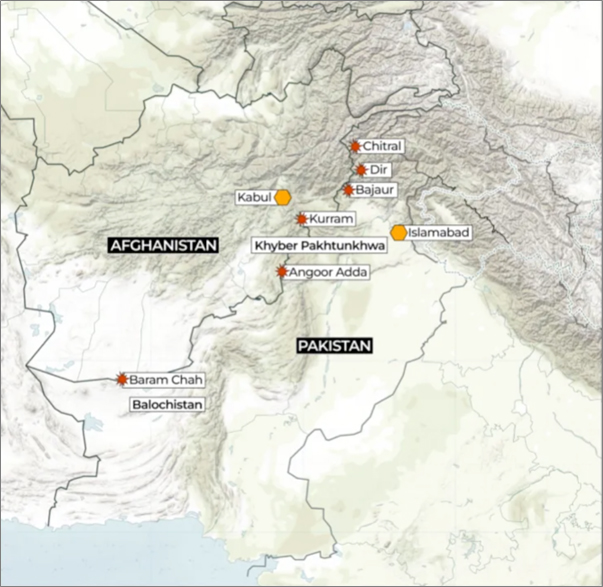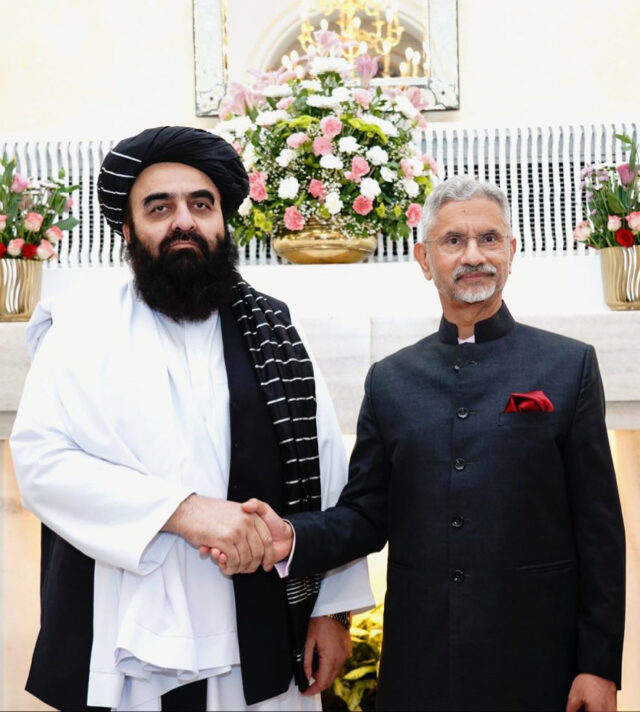|
Getting your Trinity Audio player ready...
|
Welcome to The Geopolity’s What We’re Watching (3W), our daily look at the interconnected worlds of Geopolitics, Economics and Energy. Curated from the world’s leading sources of information, our analysis and commentary is designed to help you make sense of the events driving the major developments in the world.
In this roundup, we take a closer look at the recent clashes on the border between Pakistan and Afghanistan.
Early October, the Hayder Kandao outpost of the Pakistani military in the Tirah Valley of Pakistan’s Khyber Pakhtunkhwa province, near the Afghan border, was attacked. The attack killed 11 Pakistani soldiers. Although no individual or group officially claimed responsibility, an organization named he Tehreek-e-Taliban Pakistan (TTP) was generally considered responsible.
As per the BBC, in retaliation Pakistani jets then bombed Afghanistan’s Paktia province and parts of Kabul. In response to this Pakistani military operation, the Afghan army launched surprise attacks on Pakistani border forces.
As per Al Jazeera, this triggered clashes between the Afghan and Pakistani armies from the 10th until the 12th of October, killing dozens on both sides. The Taliban administration’s spokesman, Zabihullah Mujahid, said at least 58 Pakistani soldiers were killed in the “retaliatory” attacks. The Pakistani military admitted 23 of its soldiers were dead while claiming to have killed 200 Taliban and affiliated “terrorists”.

As per India’s Republic, on the 19th of October Afghanistan and Pakistan then formally agreed to a ceasefire during talks hosted by Qatar.
 The BBC writes that the conflict developed while Afghanistan’s foreign minister Amir Khan Muttaqi was in India for a week of talks. The visit was noteworthy as India used to support the Western-backed Afghan government, which the Taliban drove from power. The Taliban, meanwhile, were supported heavily by Pakistan, India’s arch-enemy, during the Soviet Union’s Afghan War. For this reason, India supported factions fighting against the Taliban in Afghanistan until the group was removed from power after the 2001 US invasion. India’s intention now is to improve relations with the Talibani leadership in Afghanistan, in order to pressure Pakistan. After Muttaqi met Indian foreign minister S Jaishankar, India said that it will reopen its embassy in Kabul which was shut four years ago when the Taliban returned to power.
The BBC writes that the conflict developed while Afghanistan’s foreign minister Amir Khan Muttaqi was in India for a week of talks. The visit was noteworthy as India used to support the Western-backed Afghan government, which the Taliban drove from power. The Taliban, meanwhile, were supported heavily by Pakistan, India’s arch-enemy, during the Soviet Union’s Afghan War. For this reason, India supported factions fighting against the Taliban in Afghanistan until the group was removed from power after the 2001 US invasion. India’s intention now is to improve relations with the Talibani leadership in Afghanistan, in order to pressure Pakistan. After Muttaqi met Indian foreign minister S Jaishankar, India said that it will reopen its embassy in Kabul which was shut four years ago when the Taliban returned to power.
As to the origin of the tensions between Pakistan and Afghanistan, The National Interest writes that the root cause for the animosity between the two countries goes back to colonial times. Colonial Great Britain imposed the so-called Durand Line as the border between the two countries, through which the lands of the Pashtun tribe were divided between Pakistan and Afghanistan. The Pashtuns are the politically dominant ethnic group in Afghanistan, and the tribe resents the British action.
This is the reason for groups such as TTP to attack the Pakistani army in Pakistan’s Khyber Pakhtunkhwa province, and due to the tribal connection, Afghanistan’s Taliban government has not undertaken any actions to halt the TTP’s operations in Pakistan, is the Pakistani perspective.
From the Indian perspective, the Pashtuni sentiment regarding the Duran Line is an opportunity that can be leveraged against Pakistan, which explains the Indian outreach to Afghanistan’s Taliban government which according to the BBC goes back to June 2022. Pakistan sees this sentiment as an existential threat precisely because India sees it as an opportunity, as it fears being caught in a pincer movement from India in the east and Afghanistan in the west.
3W notes that colonial Britain also created the issue of Kashmir that is at the root of the tensions between Pakistan and India. Colonial Britain deliberately drew borders through territories that historically and ethnically were unitary in order to create tensions which could be used to maintain British control.
That geostrategic reasoning remains present, as Bloomberg writes the US is looking to step in to now “resolve” the tensions between Pakistan and Afghanistan. The US interests in the region are multiple. The US has an interest in using Pakistan to pressure India. And recently, the US has demanded that Afghanistan hand back the Bagram Airbase to the US military. Bagram is in a strategically important location, as it is only 400 miles away from a Chinese military base in China’s western region. The US has accused Afghanistan of allowing China to establish a presence at Bagram, writes The Telegraph.

